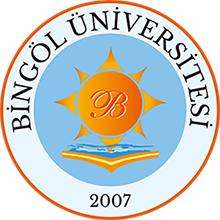Potansiyel Kontrollü Elektroliz Yöntemi ile Hazırlanan Farklı İçerikli Bakır Oksit Yarıiletkenlerinin Özelliklerinin İncelenmesi
Özet
ÖZET:
Bu tez çalışmasında, Cu, Cu2O, CuO, Cu/Cu2O, Cu/Cu2O/CuO ve Cu2O/CuO içeren malzemeler, ısıl işlem temelli ekonomik bir elektrodepozisyon yöntemi kullanılarak hazırlandı. Bakır temelli bu malzemeler XRD, SEM, EDX and UV-Vis spektroskopisi yöntemleri kullanılarak karakterize edildi ve karşılaştırıldı. Üretim şartlarına bağlı olarak malzemelerin faz değişimleri ve hangi koşullarda hangi faz ya da fazların bulunduğu, detaylı olarak incelendi. Yapısal ve optik analiz sonuçları tüm aşamalarda birbiri ile uyumlu idi. Burada, yapıya oksijen ve bakır haricinde başka bir element veya safsızlık ilave etmeden, farklı bant aralığına sahip yarıiletkenler hazırlandı ve malzemenin bant aralığının geniş bir aralıkta değiştirilebildiği gösterildi. Sadece iki element içeren yarıiletken malzeme ile bileşimindeki element oranları ayarlanarak, farklı bant aralığına sahip malzemeler üretilebilir. Böylece, bakır oksit yarıiletkenlerinin kullanım alanları genişletilebilir. ABSTRACT:
In this thesis study, the materials containing Cu, Cu2O, CuO, Cu/Cu2O, Cu/Cu2O/CuO
and Cu2O/CuO have been prepared by an economic electrodeposition method based on
the heat treatment. These materials based on copper have been characterized and
compared using XRD, SEM, EDX and UV-Vis spectroscopy techniques. Based on the
production conditions; phase changes of materials and, at which conditions which phase
or phases are present, were evaluated in detail. The structural and optical analysis results
were consistent with each other at all stage. Here, the compounds with different band gap
were prepared without the addition of any element or impurity except from oxygen and
copper; this showed that the band gap of the material can be altered in a wide range. The
materials, which have different band gap, can be manufactured by using a semiconductor
material containing only two elements and adjusting the element ratios in its compound.
Thus, the areas of use of copper oxide semiconductors can be expanded.
Koleksiyonlar
- Kimya [60]

DSpace@BİNGÖL by Bingöl University Institutional Repository is licensed under a Creative Commons Attribution-NonCommercial-NoDerivs 4.0 Unported License..













